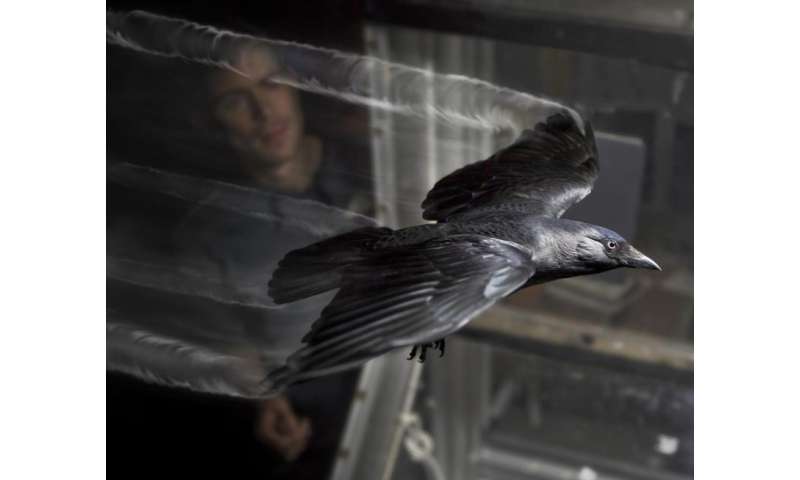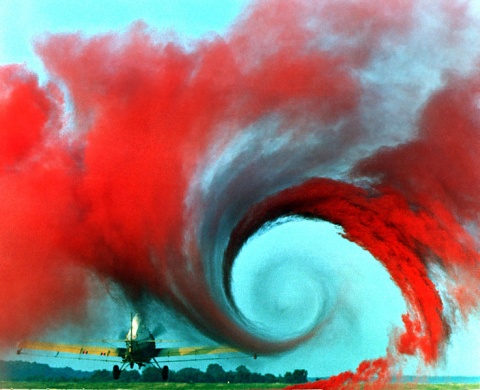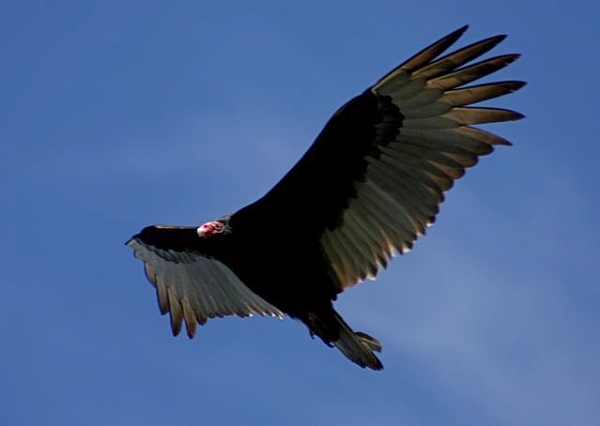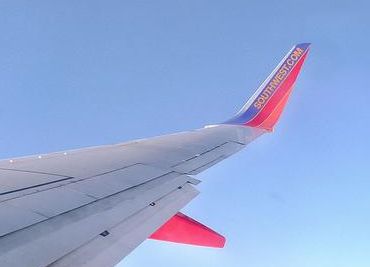
It doesn’t make sense but if your wings are the right shape flapping saves energy.
Birds and airplanes must constantly overcome drag to stay aloft. One source of induced drag occurs during lift when swirls of air, called vortices, roll off the wingtips. This small plane generates a huge wingtip vortex, forcing it to burn more fuel as it flies.

Large soaring birds, such as turkey vultures, reduce drag in two ways. Their wingtip feathers form slots that break the single vortex into smaller ones (small is good!), and they turn their wingtips up as they soar.

Southwest Airlines turns up its wingtips, too, to save fuel.

But what about smaller birds that flap all the time? Are they doomed to inefficient, labor-intensive flight? A new study from Sweden says no.
Biologists at Lund University studied jackdaws (Corvus monedula), a corvid smaller than the American crow. Using mist and multiple cameras they found that the birds’ slotted feathers, specifically designed for flapping flight, also break up the vortex into multiple swirls. See them rolling off the wings in the study photo at top.
Now that we know slots are efficient for both flapping and soaring, what prompted their development? The study’s authors “propose the hypothesis that slotted wings evolved initially to improve performance in powered (i.e. flapping) flight.”
In fact, flapping saves so much energy that author Anders Hedenström suggests, “We could potentially build more efficient drones to fly with active wingbeats. Within a ten-year period, we could see drones which have the morphology of a jackdaw.”
Read more about the study at Science Daily or the original paper here at The Royal Society.
(photo by Aron Hejdström linked from Phys.org)
The big vertical wingtips on many (you mentioned southwest) Boeing airplanes save about 4 to 6% in fuel or allow about a 2% higher cruise speed with the same fuel consumption. Short wing airplanes or birds cannot take advantage of this effect
r